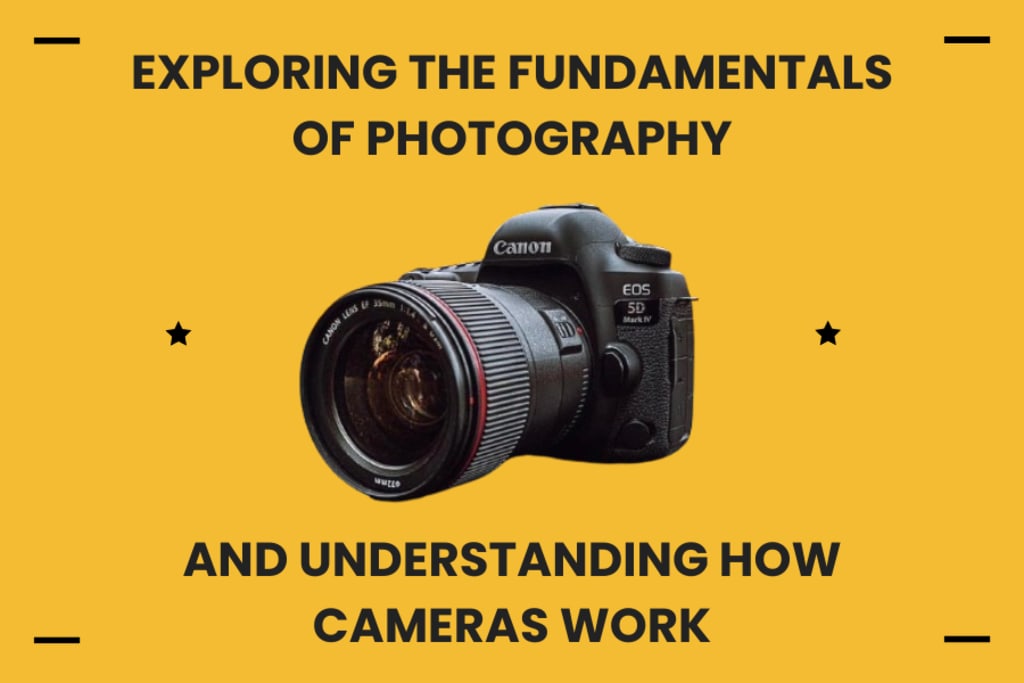Exploring The Fundamentals Of Photography And Understanding How Cameras Work
Fundamental Of Photography and how camera works

Introduction to Photography Fundamentals
Photography, the art of capturing moments, emotions, and stories, has evolved significantly since its inception. Understanding the fundamentals of photography is essential for both amateur enthusiasts and seasoned professionals alike. In this comprehensive guide, we delve into the core principles that underpin the world of photography.
Light and Composition
At the heart of every photograph lies light and composition. Mastering these elements is crucial for creating visually striking images. Light dictates the mood, tone, and atmosphere of a photograph, while composition determines the arrangement and balance of elements within the frame.
Understanding the interplay between light and composition enables photographers to craft compelling visuals that resonate with viewers on a profound level. Whether it's the soft glow of natural sunlight or the dramatic interplay of shadows in a dimly lit room, harnessing the power of light is paramount in photography.
Exposure Triangle: Aperture, Shutter Speed, and ISO
The exposure triangle, comprising aperture, shutter speed, and ISO, forms the cornerstone of exposure control in photography.
Aperture refers to the size of the opening in the lens through which light passes. It not only regulates the amount of light entering the camera but also influences depth of field, determining the sharpness and focus of the image.
Shutter speed dictates the duration for which the camera's shutter remains open, controlling the amount of light that reaches the sensor. Fast shutter speeds freeze motion, ideal for capturing fast-paced action, while slow shutter speeds create motion blur, adding a sense of dynamism to static scenes.
ISO, or International Organization for Standardization, measures the sensitivity of the camera's sensor to light. A lower ISO value results in less sensitivity and finer grain, producing cleaner images with minimal noise. Conversely, higher ISO values amplify sensor sensitivity, making it easier to shoot in low-light conditions.
Understanding Camera Lenses
Lenses serve as the eyes of the camera, enabling photographers to frame and capture scenes with precision and clarity. Prime lenses offer fixed focal lengths, providing superior image quality and wider apertures for enhanced low-light performance. On the other hand, zoom lenses offer versatility, allowing photographers to zoom in and out of scenes without changing lenses.
Each lens possesses unique characteristics, from wide-angle perspectives that encompass vast landscapes to telephoto lenses that bring distant subjects into sharp focus. Understanding the nuances of different lenses empowers photographers to select the most appropriate tool for capturing their vision.
How Cameras Work: A Technical Overview
Behind every captivating image lies a sophisticated interplay of technology and artistry. Understanding how cameras work unveils the intricate mechanisms that transform moments into timeless memories.
Image Sensor and Processing
At the heart of every digital camera lies the image sensor, a semiconductor device that converts light into electrical signals. Common types of image sensors include CCD (Charge-Coupled Device) and CMOS (Complementary Metal-Oxide-Semiconductor), each offering distinct advantages in terms of image quality and performance.
Once light strikes the image sensor, it undergoes a process of analog-to-digital conversion, where electrical signals are translated into digital data. This raw image data undergoes digital processing, where algorithms enhance sharpness, color accuracy, and dynamic range, resulting in the final image output.
Auto focus and Exposure Metering
Auto focus systems utilize a combination of contrast detection and phase detection methods to achieve rapid and precise focus locking. By analyzing differences in contrast and comparing phase disparities, autofocus systems ensure that subjects remain sharp and well-defined, even in challenging shooting conditions.
Exposure metering systems evaluate the scene's luminance and color temperature, determining the optimal exposure settings for capturing balanced and well-exposed images. Through sophisticated algorithms, exposure meters calculate the appropriate aperture, shutter speed, and ISO values, ensuring accurate exposure across a diverse range of lighting scenarios.
Optical Viewfinder and Electronic Displays
Traditional cameras feature optical viewfinders, allowing photographers to preview scenes through a prism or mirror assembly. Optical viewfinders offer a direct, unadulterated view of the subject, facilitating precise composition and framing.
In contrast, modern cameras embrace electronic displays, such as LCD screens and electronic viewfinders (EVFs), offering real-time feedback and customizable overlays. Electronic displays empower photographers to visualize exposure settings, histograms, and focus points, enhancing creative control and workflow efficiency.
Conclusion
Photography transcends mere technical proficiency; it embodies a profound expression of creativity and vision. By mastering the fundamentals of photography and understanding the inner workings of cameras, photographers can unlock boundless possibilities and unleash their artistic potential.
In the dynamic landscape of digital imaging, continual learning and exploration remain the keys to innovation and excellence. Embrace the journey, seize the moment, and capture the beauty that surrounds you.
About the Creator
FDS Masterclass
Welcome to FDS Masterclass – your gateway to the world of visual storytelling! 🌟 We're here to share the secrets of premium product photography, video production, and entrepreneurial skills.






Comments
There are no comments for this story
Be the first to respond and start the conversation.